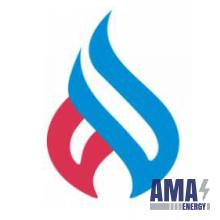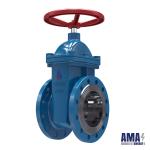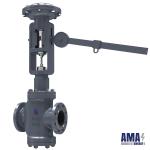JSC "Penza plant of Pipeline Fittings"
Joint Stock Company "Penza Plant of Pipeline Valves" - JSC "PZTA" - one of the leading manufacturers of pipeline valves in Russia and the CIS countries.
The products of PZTA JSC are intended for installation on pipelines transporting various types of liquid, gaseous media, with a temperature regime of -60 - +565 ° C: oil, oil products, gas, water, steam, aggressive and toxic media; containing mechanical impurities.
Factory history
The first enterprise of our group of companies was founded in 1992 as a trading company. In the early 2000s, cardinal changes took place in the domestic industry, which led to the emergence of new industries and the modernization of factories. By this time, the company has grown into a stable commercial structure, having established itself as a reliable supplier of high quality pipeline fittings.
Extensive work experience has allowed the company since 2012 to master a new line of activity - its own production of pipeline valves under the PZTA trademark:
- valve;
- disk shutter;
- shut-off valve (valve);
- ball valve, plug;
- Check Valve;
- safety valve;
- control valve;
- pressure regulator;
- safety valve switching device;
- block of safety valves with switching devices;
- liquid level indicator;
- locking device for level indicators;
- steam trap.
Appropriate permits were obtained for all products, the quality management system confirmed compliance with the requirements of GOST R ISO 9001-2008.
By 2017, the range of products manufactured by PZTA JSC expanded: a new production was mastered:
- filters;
- MIM (membrane-actuating mechanism);
in 2018:
- shut-off valve;
- flange.
Permissive documentation was obtained for all products. The quality management system has been tested for the requirements of GOST R ISO 9001-2015.
Today, among the clients of PZTA JSC are the largest enterprises of the fuel and energy, metallurgical, machine-building, defense complex of Russia and the CIS countries. The plant's products are certified, passed the relevant tests, and comply with safety requirements. The plans include increasing production capacities, mastering new technologies, and further improving the quality control system.
Activity
The main activity of PZTA JSC is the production of pipeline fittings.
On the basis of the plant, services are provided for service, warranty, post-warranty maintenance of pipeline valves.
Geography of activity
At present, PZTA JSC supplies products to more than 300 enterprises in Russia and the CIS countries.
About pipeline fittings
Pipe fittings are devices installed on pipelines, tanks, apparatuses and other relevant installations, designed to control the flow of the working material. Usually, in the definitions of pipeline valves, it is indicated that the control is carried out "by changing the flow area in the working body of the valve." In fact, this means the following: the working material (or working medium, which can be a suspension, liquid, gas, powdered substance or steam) is fed through pipes in a given direction. According to the operating conditions, in certain sections of the pipeline it is necessary to periodically turn off this flow, sometimes it is necessary to redirect it to another branch of the pipeline, sometimes it is necessary to maintain the specified parameters (pressure and temperature), which is possible, for example, by regulating the flow force or releasing excess working material from closed system. All these actions are carried out with the help of fittings, inside of which there is a movable element that allows you to completely or partially block the hole through which the medium passes.
Fittings are made of cast iron, steel (carbon, alloy and others), non-ferrous metals (titanium, bronze) or non-metallic materials (ceramics, PVC and others).
General classification of pipeline fittings
All types of pipeline fittings, according to their intended purpose, are divided into industrial (for example, fittings for oil transportation), plumbing and laboratory. According to the field of application, steam-water, gas, oil, chemical, energy, capacitive (installed on tanks and capacitive equipment) and ship (installed on ships) fittings are distinguished.
Functional classification
According to their functional purpose, valves are divided into shut-off, control, distribution, safety, protective and phase separation.
Shut-off valves are used to completely shut off the flow of the working medium in the required sections of the pipeline. This type of fittings includes taps, gate valves, dampers, valves and valves.
Control valves allow you to maintain the parameters necessary for the proper functioning of the system: pressure, temperature, and others. The principle of operation of such fittings is based on a change in the flow rate of the medium, that is, a change in the flow force. For example, if you partially cover the passage for the medium, the amount of material supplied will decrease, as a result of which the created pressure also decreases. Valves, level regulators, pressure regulators and other devices are used as control valves.
Distribution fittings allow you to distribute the flow in the required directions. As such fittings, special designs of taps and valves are usually used, characterized by the presence of several inlet or outlet pipes (tubes) for the working medium.
Safety fittings are designed to prevent the occurrence of too high pressures leading to accidents. The principle of operation is based on the fact that when the specified pressure parameters in a closed system are exceeded, the excess medium is released from it. Most often, safety valves are used for this purpose.
Protective fittings also prevent emergency situations that can occur either when the specified pressure parameters are exceeded, or when the flow moves in the opposite direction. The principle of operation is based on the instantaneous shutdown of a pipeline section by completely blocking the passage for the medium. For this, valves, gate valves, gates, valves and shut-off devices are used.
Phase separating fittings separate the medium into phases: for example, steam and water or oil and water. These fittings include condensate traps.
Classification according to the principle of management
According to the principle of control, valves can be controlled and autonomous. A controlled valve is one whose movable element opens or closes when force is transferred from the actuator. The drive can be manual, mechanical (electric drive, hydraulic drive, pneumatic drive and electromagnetic drive), as well as remotely located. Self-contained fittings are those structures, the movement of the moving element of which occurs under the influence of the working environment. These fittings include valves, steam traps, pressure regulators and other types of devices.
Classification by connection type
The fittings are mounted on the pipeline by means of connecting branch pipes. The method of connecting the branch pipe and the pipe may be different. According to this principle, welded, choke, coupling, pin and flange fittings are distinguished. In practice, flanged and welded connections are most often used.
Classification by type of sealing surfaces
It is necessary that in the closed state the fittings be airtight and prevent leaks, or allow their minimum regulated amount. To do this, sealing surfaces are used to ensure the absence of gaps and a tight fit of the moving element to the fixed one (seat). According to this principle, gland, bellows, membrane and hose fittings are distinguished.
Main types of structures
The main types of fittings include gate valves, valves, taps, dampers, steam traps, pressure and level regulators.
Gate valves are distinguished by a movable element made in the form of a flat sheet, disk or wedge, which, closing and opening, move perpendicular to the flow of the working material.
Valves are fittings with a movable plate-shaped element that moves when opening and closing parallel to the flow of the medium.
In cranes, the movable element is made in the form of a ball or cylinder. When opening or closing the passage, this element rotates around its axis.
Dampers are devices with a movable element in the form of a disk that rotates on an axis installed inside the opening for the passage of the working medium.
Steam traps are fittings that automatically remove condensate from the system. The separation is usually based on the difference in densities or temperatures of the phases of the working medium.
Level and pressure regulators are fittings that automatically, without energy sources, maintain the specified parameters of pressure or level of the working medium.
Main parameters of reinforcement
The main operational parameters include the pressure for which the fittings are designed, temperature, resistance to medium penetration (corrosion resistance), as well as the throughput and type of control. The first three parameters are usually determined by the materials from which the reinforcement is made. The type of control and throughput depends on the design features of the products.
Another characteristic is the mounting parameters. This may be the mass, length, height, nominal diameter of the opening for the passage of the medium, as well as the connecting dimensions of the fittings nozzles and the type of connection. It is generally preferred that rebars have a minimum weight, length and height, which saves production space. The choice of nominal passage is determined by the design of the pipeline, the amount of material that must flow per unit of time, and the characteristics of the pipes. The connection dimensions are determined solely by the dimensions of the pipes present in the system. All these characteristics are regulated by state standards and specifications.



